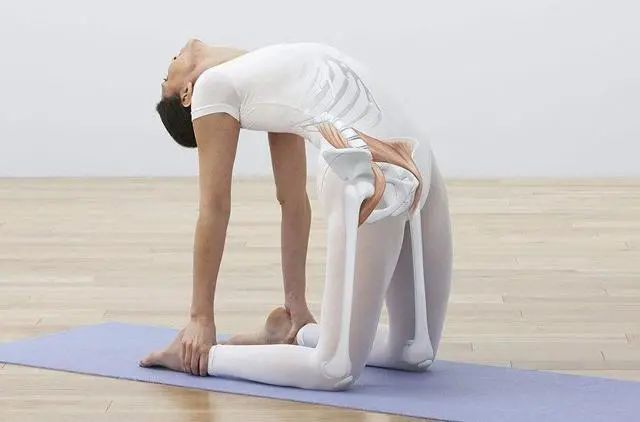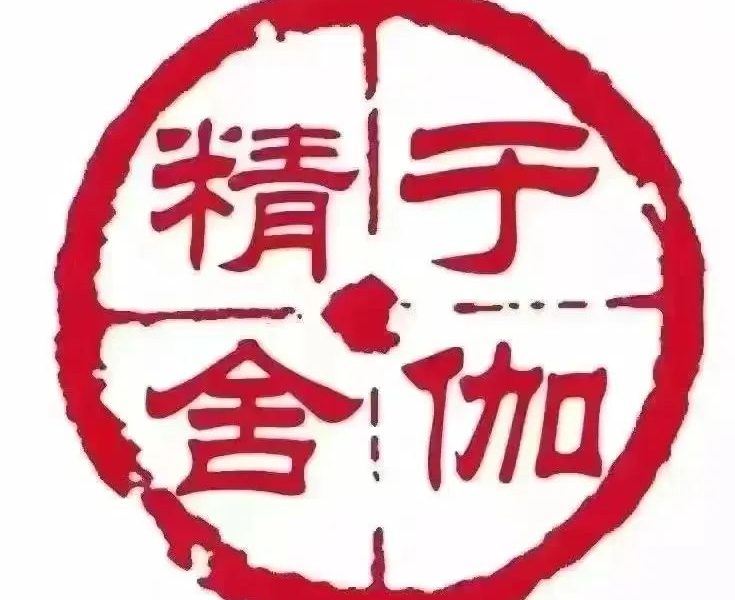Camel pose is a great yoga pose that you can use to enhance your self-confidence.

This intensive backward bending involves many systems of our body.

In particular, intensive stretching can activate the digestive system and target your heart and throat chakra.

Practicing camel pose can stimulate your respiratory system and strengthen auxiliary respiratory muscles.

Camel pose has certain difficulty.

In practice, you need to listen to your body, pay attention to and stabilize your lower back, and find a suitable variant for you.

Kneel on the mat, thigh and calf close together, feet touching each other.

Put the instep on the mat.

Put your palm on the sacrum and push your hips forward.

Activate abdominal muscles to protect the lower back.

When inhaling, lengthen the spine.

When exhaling, gently tilt the upper body backward and open it upward at the same time.

Make sure the upper body does not lose length and the lower back cannot be compressed! Keep your right hand on your right foot and your left hand on your left foot.
If you can, put your palm on the sole of your foot.
If you can’t grasp the heel, you can lift the heel.
Of course, you can also use yoga bricks to assist in practice.
Keep your head in line with your spine.
Skill: slight internal rotation of both legs can keep the sacroiliac joint stable.
Make sure to find a mild spinal extension at the transition from the cervical spine to the thoracic spine.
Also try to let the deep muscles of the neck bear the weight of the head.
The pubis and hips move upward.
Press your knees and lower legs on the ground.
Ribs should form a harmonious line with the abdomen so that they will not protrude.
The chest should be pushed down to the pubic bone, allowing the top of the chest to expand to open the chest.
FAQ 1 The ideal stability is from the waist up.
If there is no such stability in the middle of the body, the spine will bend in the lower back.
In this way, the opening of the sternum is more like the opening of the abdomen.
2.
Squeeze the shoulder blades in order to open the chest, many people try to squeeze the shoulder blades together and push the sternum forward.
The chest is opened to produce a slender extension in both directions.
3.
Cervical compression and neck stretching will affect the ability of breathing, thyroid, blood circulation and concentration.
When cervical compression is caused by posterior bending, the situation is just the opposite.
Here, first create the length, and then tilt your head back.
The benefits of asana can help fight round shoulder hunchback, stretch and strengthen spine and back muscles, relieve pain, stretch psoas major muscles, stimulate nervous system and eliminate fatigue, stimulate thyroid gland, relieve tension and pressure, stretch the front of the whole body, improve posture, stimulate abdominal organs, promote blood circulation, strengthen abdominal muscles and activate the whole body system, The slightly twisted changes in the uplifting pose variant twist camel pose help to make intercostal muscles easier to release, and the asymmetrically extended twist back bend provides mild adjustment.
2.
Camel against the wall by leaning your hand against the wall and gently pushing away, this will avoid bending your lower back and practice opening your shoulders.
Try to push yourself away from the wall with your hand.
This will make it easier for you to keep your core active and open your shoulder joints.
3.
Practice with a chair.
This will ease the anxiety about posture, even if you don’t have enough strength or flexibility to do it alone.
The body learns where it should go to create the best conditions for a complete posture.
4.
Dynamic camel pose in dynamic camel, swing your pelvis up and down, enter camel pose, and then return to sitting position.
This posture can minimize your fear of swinging and make your body adapt to this posture to the greatest extent.
Note: this variant can only be practiced if you feel safe and there are no problems with your back! Contraindications: people with cervical discomfort should not tilt their head back.
Low back pain, high blood pressure, low blood pressure, migraine and insomnia are not suitable for practicing this pose…


